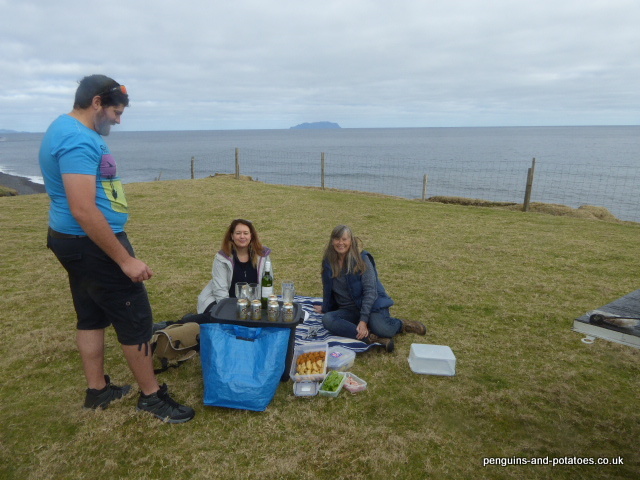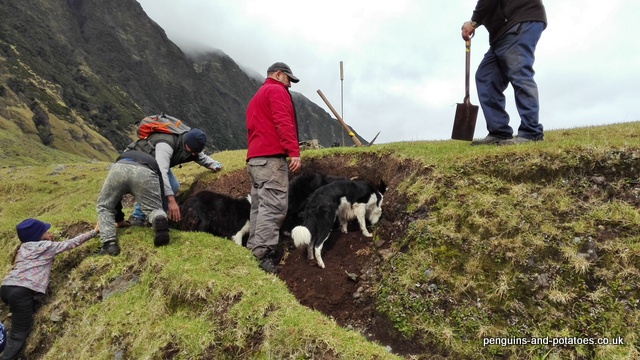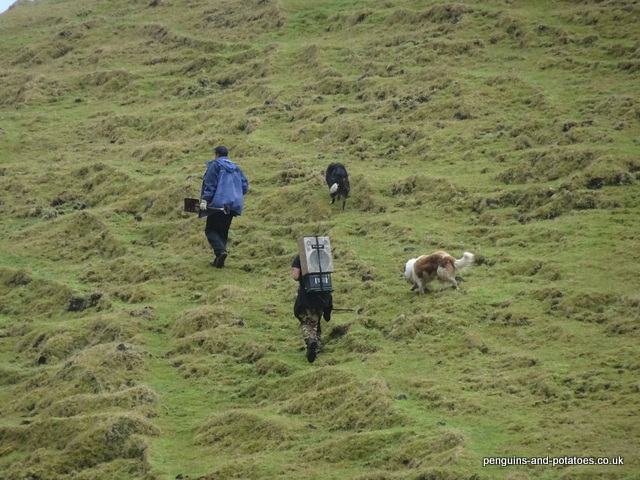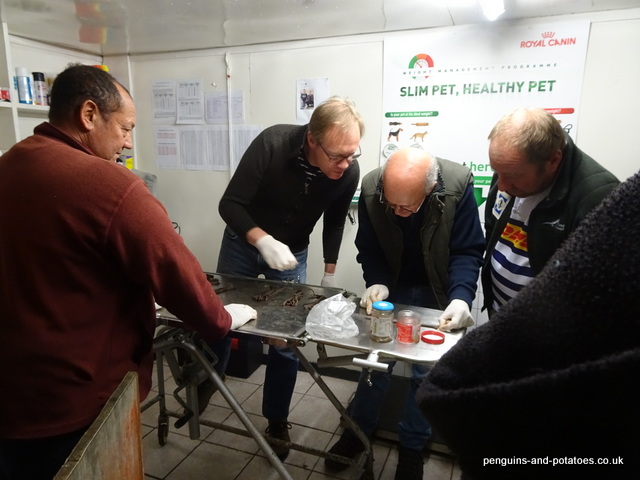This is another important event in the annual calendar of Tristan da Cunha. One of the more taciturn staff members of the Agriculture Department surprised me some weeks ago; while another member of the team and I were discussing the coming Ratting Day, the strong silent type leaned over and said “Ratting Day is lots of fun”. He was right!
It all started in 1884. The trading ship called the Henry B Paul was shipwrecked on the east coast of Tristan. It has been suggested that the wrecking of the boat was deliberate, as part of an insurance fraud. The wreck changed the island for ever, because a number of black rats swam ashore. It was, in effect, a very black day. Within a week of the shipwreck, rats were seen at the Settlement.
The number one problem of rats is their ability to multiply. It is said that three breeding pairs can multiply to a million rats in twelve months, under ideal conditions. This may sound far-fetched, but if conditions are right baby rats can be sexually mature in just five weeks, there can be up to 14 young in each litter, and the gestation period is only 21 days. That is why rats are a problem in every city in the world.
When the rats arrived on Tristan, they had almost everything their own way. There were no natural predators, with the possible exception of the Arctic Skua, but in the case of the Skua the bird is diurnal and the rat is nocturnal, so only rats that were already sick would expose themselves to attack from Skuas. There are no foxes, no owls, no stoats, no raptors, no snakes. No enemies for the rats. At the same time, food was plentiful. Fish debris was being washed up on the shore, there was plenty of vegetative matter for the omnivorous rats, and particularly there were millions of birds that nested in burrows and on the surface of the ground, and which provided the rats with an everlasting high-protein food supply of eggs and chicks. It was convenient for the rat population that the different bird species nested at different times – the supply chain was assured. In a very short time the rats populated virtually the whole island. As the rat population increased, so the bird population was decimated, and some bird species even became extinct.
At the time, the severe reduction in the bird population was serious to the Tristanians, because they themselves had a diet which was quite heavily dependent on sustainably taking birds for meat and for cooking fat. Also of course the rats ate the islanders’ crops, particularly the potatoes, and they broke into food stores where they ate or damaged food that was being stored for the winter.
Rat control became a part of the islanders’ busy lives, with traps, dogs, sticks and later toxic baits all playing a part in the control of the black rat. At some time in the 1940’s Ratting Day started, being organised by the residents as a joint community action to try to address the problem of rats.
This, then, was the origin of rats, and the origin of Ratting Day, on Tristan.
We felt great excitement at being able to witness this annual event that is so much part of the cultural heritage of Tristan da Cunha. In common with all the main annual events, and in common with organised work days such as Unloading Day and Fishing Day, the day officially started with the sounding of the Gong. This traditional touch came as no surprise to anyone – it had already been firmly established the day before that Friday May 26th was going to be Ratting Day. If it had transpired that the weather changed and that the day was going to be bad, the following Monday would have been substituted. The weekends here are sacrosanct. But this particular Friday we were blessed with great weather.

The five teams that had registered for the competition this year set out to their chosen grounds, together with dogs, children, sticks, spades, crowbars and essential supplies. They all went west, targeting known areas of large populations of rats in the Valley and around the Patches and in the ground of the western plain between the Patches and the escarpment. These had been competition-winning areas in previous years. However, as we have learned, 2017 is different. Heavy rainfall and bad flood damage has changed the habitat for the rats. We must assume an awful lot of drowned rats, because one particular team worked an area in which they had seen great success in previous years, but this year they spent three hours with no rats at all being seen.

The process of ratting takes skill and hard work. Each team looks for signs of rat tracks on the ground; this takes accustomed eyes, to interpret on the ground the linear traces of the passage of the rats. Once it is established that rats have taken up residence in the area, it is a question of following the tracks and finding the hole that leads to their nests. Often these holes lead under boulders, and using bars and spades the ratters have to remove the boulder and dig down the lines of the holes to where the rats are lying. Suddenly, a rat makes a break for it, knowing that he has been cornered. He might be caught by the edge of a spade, or by a well-aimed boot. Outside this circle of action, there are the dogs, poised for action. Very few rats escape this cordon.
Once each rat has been killed, the next step is to cut off its tail. The tails are all collected in a plastic bag, to be measured and counted at a later time – this is a competition, after all. Prizes and prestige are both available for the winners. The winners will celebrate in traditional style, while those who are not winners this year will no doubt need some form of solace to see them through the evening.

The next phase of the day is the counting and measuring of the tails, and the prize giving ceremony. This all takes place at the Vet Clinic. Each ratting team presents its bag of tails, which are checked, counted, measured and recorded. The ‘most tails’ prize (1st and 2nd) is awarded to the team with the most tails per person in the team, to allow for differences of team size. There are also prizes for the longest tail, and there is a consolation prize for the team with the least number of tails per head. The longest tail this year was impressive – a record-beating 30.2 cm, while altogether 399 tails were counted. This may sound like a lot of tails, but it compares poorly with last year’s figure of around 930. This fall in numbers could be due to the floods taking their toll on the rat population, or perhaps the fact that rather fewer teams entered the competition this year.

And so on to the closing event of the day, a dance in the Philip Hall. And there was all-round agreement that “Ratting Day is lots of fun!”
